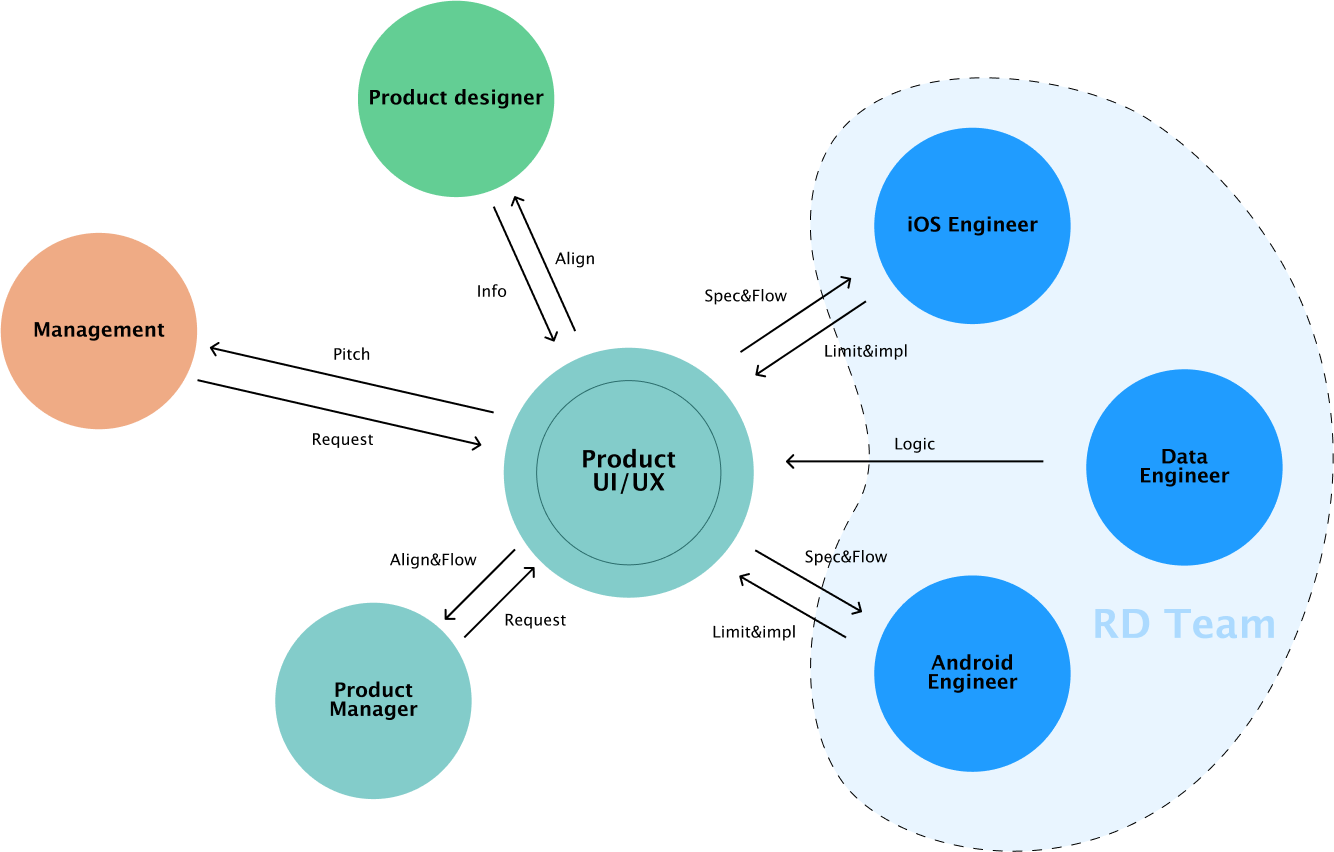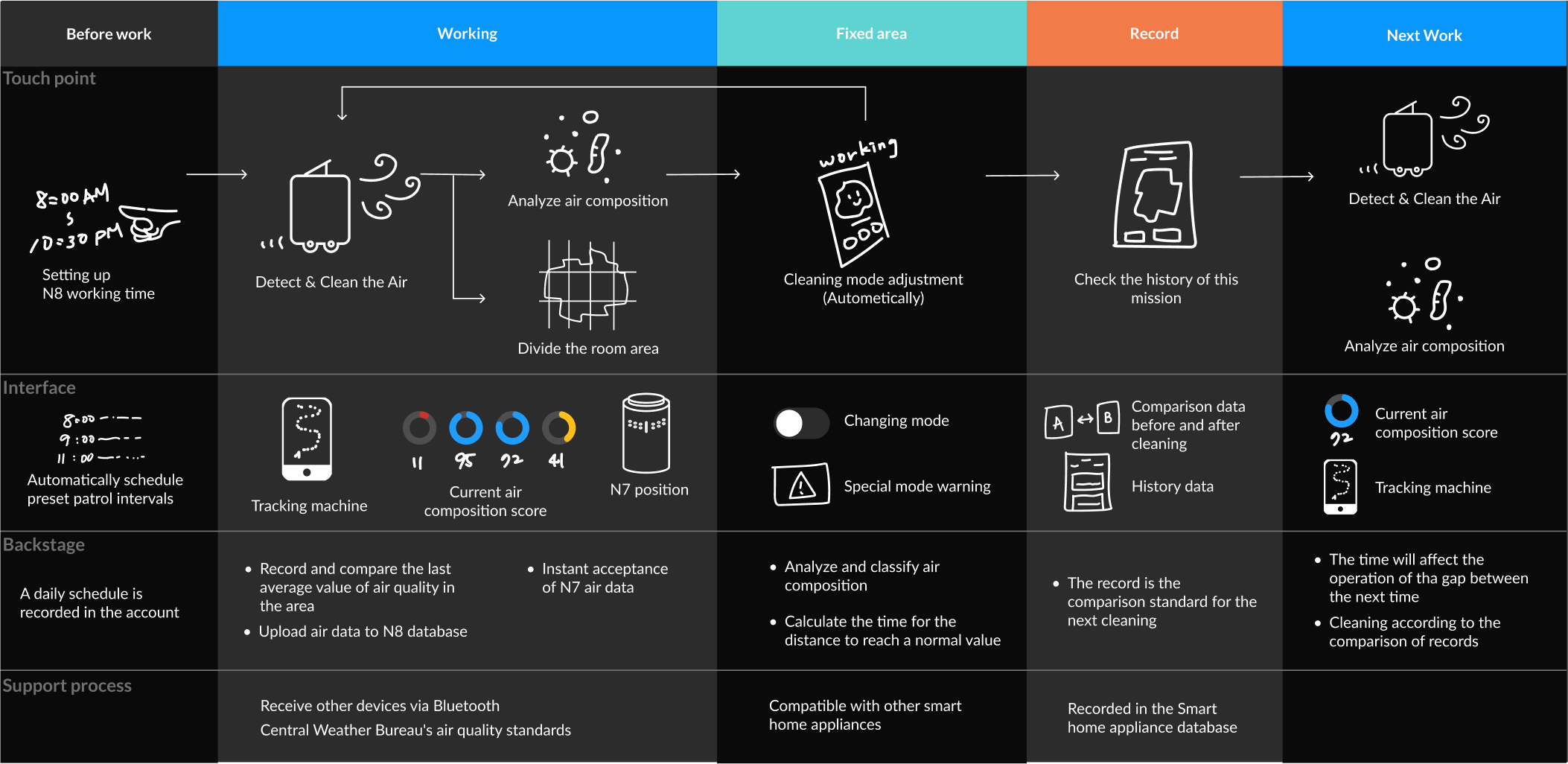Smart-home App
💡 Introduction
A moving air purifier connected with software that helps people do the best air purify plan and clean the noxious gas before they cause health damage.
Certain data and research are hidden due to confidentiality agreements
🗓️ Timeline
2021.8~2022.4
📍 Role
UX designer
UI designer
🤝 Collaberators
Ian Lin (PM)
KJ Zhong (Team Leader & Developer)
Ben Chen (iOS)
Siri Peng (iOS)
Hanry Gao (Android)
🏅 Achievement unlocked
As a solo designer, I gained a deep understanding of both front-end and back-end processes and transferred it into a feasible approach. I led the app interface, operational structure and gesture of the IoT product which would be compiled to usage and technical documentation.
Overall
Design an integrated smart home application, starting with air purifiers and scaling to support other potential devices (e.g. smart diffusers, cooking appliances). The app aims to provide seamless control across devices, spaces and comprehensive home management.
Contribution

Design Challenge
- Cross-Product Logic Integration
- Real-Time Device Connectivity and Sync
- Multi-User, Multi-Space Scenarios
- Data Visualization & User Education
- System Scalability
Stakeholders

Common question
During the project, I recognized that leadership had limited familiarity with app functionality and often envisioned highly ambitious digital features. To bridge this gap, I proactively translated technical and product constraints into clear, strategic language, helping align the team around realistic goals. By identifying and prioritizing high-impact, feasible features, I successfully led the team to deliver core functionalities first—laying a focused and achievable product roadmap while building trust and clarity across stakeholders.

General pages
Full UI kit
N8 air purifier
We aim to develop a portable remote control device that can display real-time status and usage history of the machine, while also allowing users to operate and manage its functions directly.
Functionality
Autonomous air purifying system that navigates dynamically using feedback from fixed sensors (e.g., N7 the best selling product). Detects PM2.5, PM1.0 and VOCs. Supports remote control via app, mobile scheduling and air quality history tracking which will be optimized to focus on high-pollution areas at next route.
Use case
Ideal for large spaces—offices, schools, exhibitions, or homes with high airflow variation—especially in polluted areas.
Design challenges
- Requires smart coordination between mobile and fixed devices.
- Must map and adapt to changing indoor layouts in real time.
- Needs to visualize air quality changes clearly and interactively.
- Must respond instantly to hight-pollution area and time period with automated routing.
Early stage research
In our competitive analysis, we considered the product’s mobility and therefore examined smart devices such as air purifiers and robotic vacuum cleaners as relevant benchmarks.
Communication and cooperation
The initial request was simply to make the app function as a controller. However, the PM envisioned a more versatile direction, suggesting we leverage the product’s mobility. We ultimately framed the concept as a “smart air assistant,” enabling the system to send notifications, track activity and allow for custom scheduling—drawing inspiration from the advanced features of robotic vacuums.
How it works?
The air purifier can move, as if a butler decides which solution would be taken according to different situations. During the implementation, N8 will arrange the best patrol cleaning plan for customers' space based on the current air quality by itself. How to judge the situation? It is based on the data before and after at the same area to determine the cleaning strength of the machine. And receiving the fixed-area data of the N7 (the small air purifier) is to determine whether to perform an emergency cleaning.

Final work
UI kit

Interface


Smart Wok
We aim to design a cooking device tailored for people with little to no cooking experience, featuring recipe sharing and guided instructions to help anyone prepare delicious meals with ease.
Use case
Perfect for beginner cooks—prevents overcooking, smoke, overheating or confusion during recipe execution.
Design challenges
The smart stir-fry pot features a wide range of complex functions—heat levels, stirring speeds, cooking modes and temperature settings—each with multiple stages. On top of that, the mobile interface needs to display time remaining, recipe guidance and interactive buttons. Balancing all these elements in a limited screen space posed a major design challenge.
Key considerations included:

Communication and cooperation
Initially, leadership envisioned the app as a simple remote control. We demonstrated the value of a more refined interface by incorporating smart displays and animated transitions, using potential emergencies during cooking (e.g. overheating or spillage) to highlight the need for clear and responsive interaction buttons—successfully aligning usability with aesthetics.
We also encountered two main challenges:
- Avoiding over-automation: Leadership hoped users could simply add ingredients and the dish would cook itself, but current technology doesn’t support that level of automation.
- Subjective seasoning: Because seasoning amounts are subtle and taste varies by individual, we couldn't visualize precise measurements and instead offered flexible, user-adjustable suggestions.
Prototype
Final work
Fregrancy
Functionality
Time- and scene-based scent release system with remote control via a mobile app. Uses modular, replaceable scent cartridges.
Use case
Designed for home users who want to shape their space through curated scents—whether to relax, energize or focus.
Design challenges
- Device can’t detect scent types due to hardware limitations.
- Product design inherited from a third party—requires full visual and experiential integration.
- Must align behavior and version updates with existing brand systems.
- Needs seamless syncing across hardware and app platforms.